|
|
|
Sort Order |
|
|
|
Items / Page
|
|
|
|
|
|
|
| Srl | Item |
| 1 |
ID:
192616
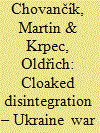

|
|
|
|
|
| Summary/Abstract |
Progress made in European defence-industrial integration has been subjected to the hardest test with the 2022 Russian invasion of Ukraine. The conflict has had profound implications for European defence industries across the board and spurred on massive investment into the sector. Based on extensive analysis of procurements, adopted policies, and shifts in discourse, we argue that the practical steps undertaken by Central and Eastern European (CEE) defence industries in the wake of the conflict are disintegrational. This is contrary to many discernible indicators which align with European integrational initiatives in defence. Moreover, the paper argues that the pattern of decisions taken by Central and Eastern European countries reinforces structural barriers to potential future European defence-industrial integration. The findings are significant to EU-wide, regional, and bilateral defence-industrial co-operation as well as national defence industrial strategies in reaction to the ongoing war in Ukraine.
|
|
|
|
|
|
|
|
|
|
|
|
|
|
|
|
| 2 |
ID:
192618


|
|
|
|
|
| Summary/Abstract |
Several variables are critical to the future course and outcome of the current war. The most important is the morale factor on both sides. Wars are fought by people. The willingness of soldiers to die for their country and of the civilian population to bear the consequences of war is a key factor in a state’s readiness for total war. And Ukrainians are fighting as one. Russian attacks on Ukraine’s critical infrastructure in November 2022 aimed to undermine their will to fight. But the available data from summer 2023 does not suggest that the Ukrainian public’s faith in victory has decreased, nor that their willingness to make territorial or other concessions has increased. Unfortunately, one can make an expert guess that support for the war in Russia is also considerable. Protest from the Russian population is meagre, lukewarm, and sporadic. The Russians are unhappy that they are not winning the war; for the time being, they are indifferent to the suffering in Ukraine; there have been no mass anti-war demonstrations. Even Western anti-war activists do not go to Moscow’s Red Square to organise protests as in the past they demonstrated in front of the White House in Washington.
|
|
|
|
|
|
|
|
|
|
|
|
|
|
|
|
| 3 |
ID:
192617


|
|
|
|
|
| Summary/Abstract |
Russia is not a superpower, and it is not a conventional great power either. Russia is a balancing great power (balancer), which since 2007 has been purposefully offsetting western influence in the international system and attempting to resist Western (American) hegemony. The paper develops the argument that the failed aggression against Ukraine has very significantly limited Russia’s ability to use available balancing techniques. Ukraine has clearly opted for a Western orientation because Russia has entirely lost its appeal. Russian positions in Central Asia and the Caucasus are weakened. In both areas, Russia must confront the growing activities of the EU, the US, China, and Turkey. Russia’s ability to manage an equilibrium between China and India in Asia is diminishing as it can no longer export sophisticated weapons. Russia’s conventional military capabilities have been significantly reduced. All in all, Russia’s relative position among the other great powers has deteriorated significantly.
|
|
|
|
|
|
|
|
|
|
|
|
|
|
|
|
| 4 |
ID:
192615
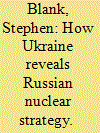

|
|
|
|
|
| Summary/Abstract |
If we examine the role played by nuclear weapons in Russia's war against Ukraine, we find that they play an offensive role in Russian strategy. The deterrence mission is as much intended to free Russia's hands for conventional war on its periphery as it is intended to prevent a nuclear first strike from the West. Indeed, the evidence of exercises etc. strongly points to a readiness for attacking Western sea-lines of communication in the Atlantic were a Western response to come as a result of the attack on Ukraine. Similarly, the potential for nuclear threat exists in the vicinity of the Black Sea as shown by Russian exercises in advance of the war there and in the Eastern Mediterranean. Those exercises reveal that Moscow's power projection policy into the Levant and beyond is also part of its deterrence strategy and has amongst its objectives protecting the Black Sea as a Russian lake, an inherently offensive posture. Therefore Russia's nuclear strategy in this war and in general stand revealed as offensive ones which the West must reckon with.
|
|
|
|
|
|
|
|
|
|
|
|
|
|
|
|
| 5 |
ID:
192611
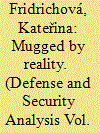

|
|
|
|
|
| Summary/Abstract |
This article discusses the surprising lack of preparedness in Russian propaganda preceding the invasion of Ukraine on February 24, 2022. Despite previous successes in developing strategic narratives during the annexation of Crimea, Russia underestimated the need for unique communication strategies for the conflict in Ukraine. The article argues that Russia's miscalculation was due to the assumption that it already had a set of strategic narratives in place, from the international order to specific issues, and viewed the conflict as a continuation of the story it had already told. However, increased scrutiny from Western media and academia led to a reexamination of assumptions and attitudes towards the region. Instead of Russia adapting its strategic narrative for a Western audience, it fell back on the existing one, further alienating the audience. This chapter highlights the importance of strategic narrative in international conflicts and its complex relationship with audience perception.
|
|
|
|
|
|
|
|
|
|
|
|
|
|
|
|
| 6 |
ID:
192614
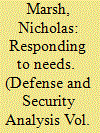

|
|
|
|
|
| Summary/Abstract |
The article analyses the provision of military aid to Ukraine during the first year after the 2022 Russian invasion and explains why it was more effective compared to other examples. It discusses the impact of material and intangible military assistance. The article examines tensions arising from principal-agent relationships between Ukraine and the states that provided support that may have affected what was provided and when it was delivered. It is notable that providers of assistance emphasised equipment rather than training, a choice that could be made because Ukraine had already built up a high level of combat skills and military organisation. The article argues that the distinctive aspects of military assistance to Ukraine that led to its impact were the quality and quantity of equipment provided, good communication and co-ordination between Ukraine and those states providing assistance, and that Ukrainian defence and government institutions could manage the aid provided.
|
|
|
|
|
|
|
|
|
|
|
|
|
|
|
|
| 7 |
ID:
192612
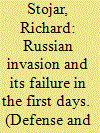

|
|
|
|
|
| Summary/Abstract |
In February 2022, Russia launched a large-scale military operation to take full control of the Ukrainian state. The invasion achieved virtually none of Russia's originally stated goals and instead of demonstrating Russian military power and effectiveness, it showed the exact opposite. Ambitious goals that were supposed to be achieved within a few days, turned out to be completely unrealistic. The war has become a long-term conflict of high intensity, instead of a flash military operation. The author argues that the cause of the Russian failure was not only the erroneous intelligence evaluation of the adversary by the Russian intelligence services and numerous mistakes of Russian units at the tactical and operational level. Rather, failure has also been due the structural weaknesses and shortcomings of the Russian army as institution. These long-term shortcomings were identified during the previous combat deployment of Russian forces in local conflicts and have never been resolved.
|
|
|
|
|
|
|
|
|
|
|
|
|
|
|
|
| 8 |
ID:
192613


|
|
|
|
|
| Summary/Abstract |
This article explores an important and often overlooked element of Ukraine’s ability to defend itself against the Russian invasion in February 2022 – the adoption of a modified western transformational model of military reform – which has focused on mass and building a western style NATO interoperable and trained military. This article argues that Ukraine’s military reform since 2016, in particular the focus on Command and Control, the development of an NCO Corps and Special Forces as well as clear procurement priorities have created the enabling conditions for the development of a flexible and adaptable military force, able to limit Russia’s battlefield success and bring the fight to the enemy. Despite this progress, however, a recurring problem facing the Ukrainian military, that is likely to continue in the future, is how to balance the ongoing requirement for mass against the urgent need for military modernisation.
|
|
|
|
|
|
|
|
|
|
|
|
|
|
|
|
|
|
|
|
|